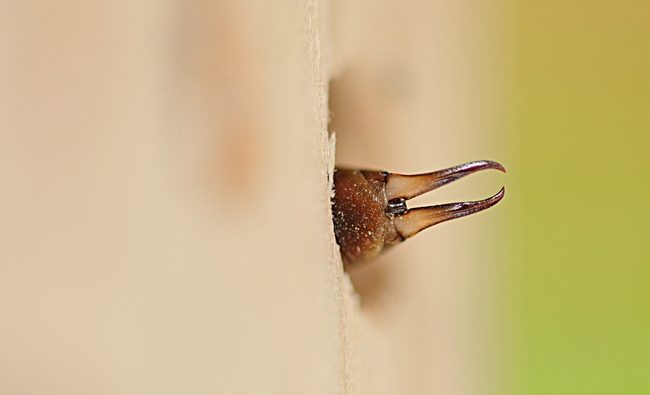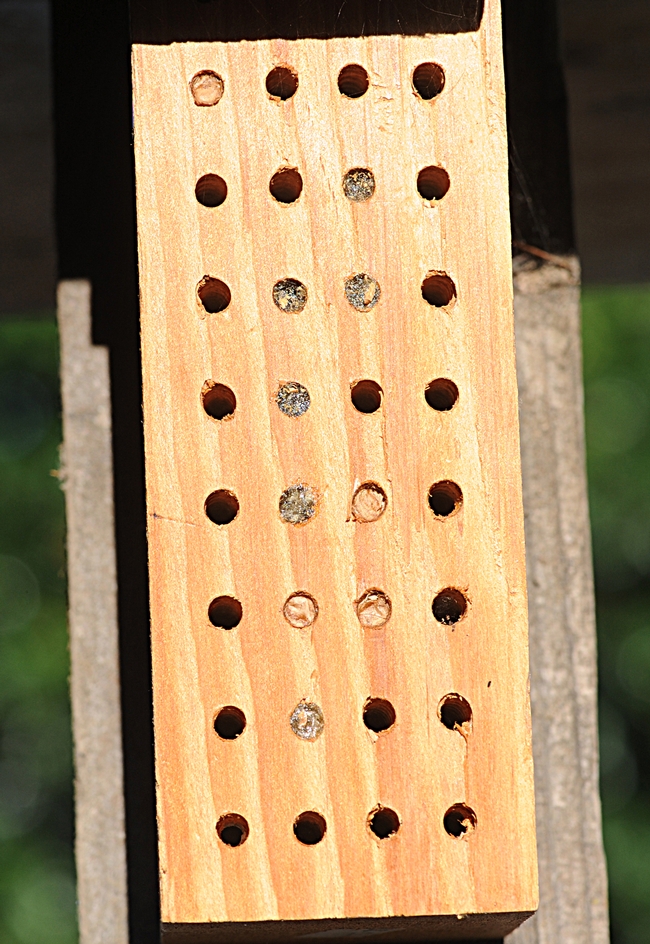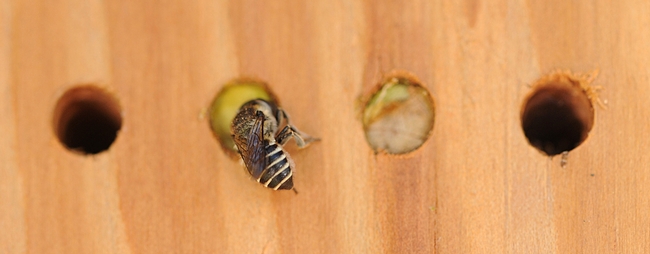- Author: Kathy Keatley Garvey
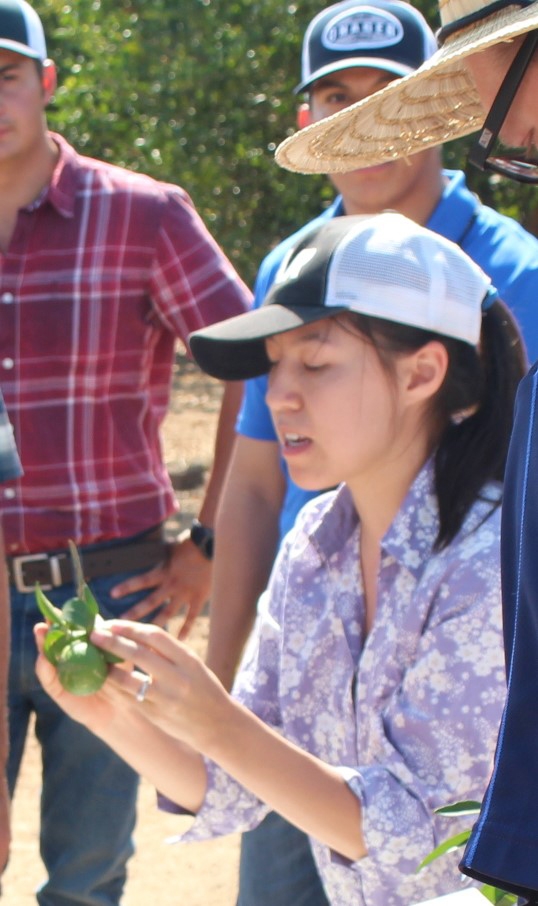
“They feed mostly at night and hide during the day,” according to the UC Statewide Integrated Pest Management Program. They hide in the bark crevices, mulch, and “protected compact plant parts such as dried, curled leaves, and under trunk wraps.”
“Earwigs feed on dead and living insects and insect eggs and on succulent plant parts, UC IPM says. "Earwig nymphs and adults will climb trees and feed on flower buds, leaves, and fruit of trees during the spring flush months (March through May). Nymphs tend to feed on plant material more than adults...Earwigs can be very problematic on young trees with trunk wraps or cardboard guards, in which they reside. They climb the trees and feed on the new leaves. Large numbers of earwigs can defoliate trees.”
Enter ecological pest management specialist Hanna Kahl, who recently received her doctorate in entomology from UC Davis, studying with UC Davis distinguished professor Jay Rosenheim. She'll present her exit seminar on “Herbivory of Citrus Fruit by European Earwigs in California” at 4:10 p.m, Wednesday, Sept. 29 in Room 122 of Briggs Hall. This in-person will be the first of the UC Davis Department of Entomology and Nematology's fall seminars. Many of the others will be virtual.
“Growers and pest control advisors in California suspect that European earwigs (Forficula auricularia) damage young citrus fruit,” Kahl writes in her abstract. “However, very little is known about herbivory by earwigs on citrus fruit. Our work details characteristics of herbivory by earwigs on citrus fruit and the use of sticky and pesticide barriers to manage earwigs and other citrus pests.”
Kahl, awarded her doctorate in August, focused her research on understanding the role of European earwigs in California citrus; developing a whole systems approach to manage earwigs and other citrus pests; and feeding preferences of fort-tailed bush katydids and citrus thrips on California citrus.
Kahl is now an ecological pest management specialist at Community Alliance with Family Farmers, Davis. She leads projects and extension efforts on sustainable pest management tactics.
She received an ongoing grant in 2019 from the Citrus Research Board on “Characterizing Earwig Damage to Citrus Fruits, and Damage Prevention using Trunk Barrier Treatment.” She also received a National Science Foundation Graduate Research Fellowship, awarded in 2017, and a 2018-19 Keller Pathways Fellowship (for entrepreneurship) from the University of California.
Active in both the Entomological Society of America and the Ecological Society of America, she won first place in the Student 15-Minute Paper Competition at the 2016 meeting of the International Congress of Entomology; and second place in the Student 10-Minute Paper Competition at the 2019 meeting of the Entomological Society of America (ESA). She served on the Eastern Branch team that won second place in the ESA's 2016 Linnaean Games, now called the Entomology Games. She co-organized a seminar, “Agroecology with Communities: Cross-Disciplinary Collaborations Between Ecology, Agriculture and Social Science,” for the Ecological Society of America at its 2019 meeting.
Kahl received her bachelor's degree in biology from Whitman College, Walla Walla; her master's degree in entomology from the University of Maryland, College Park. At Whitman College, she researched the effects of reservoirs as habitat barriers on song sharing of the birds, dickcissels. At the University of Maryland, she focused her research topics on effects of red clover as a living mulch cover crop on arthropod herbivores, natural enemies, pollination and yield in cucumber; (2) consumptive and non-consumptive effects of wolf spiders on cucumber beetles and (3) effects of red clover living mulch on greenhouse gas emissions. She studied abroad in a six-month School for International Training program in Jaipur, Rajasthan, India in 2010. Her research topic: Village dairy production in Haryana and Orissa.
Her current activities include being the chapter leader for Women in Data (WID), Sacramento.
Kahl's exit seminar will be recorded for later viewing, according to seminar coordinator Shahid Siddique (ssiddique@ucdavis.edu), a nematologist and assistant professor, UC Davis Department of Entomology and Nematology. The seminars take place every Wednesday at 4:10 p.m. Many are virtual.
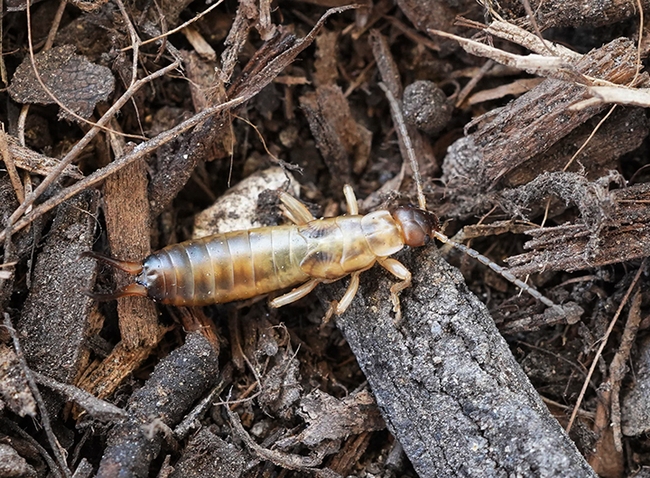
- Author: Kathy Keatley Garvey

Nematologist and plant pathologist Shahid Siddique, assistant professor, UC Davis Department of Entomology and Nematology and coordinator of the department's seminars for the 2021-22 academic year, has announced the list of fall quarter seminars, which begin Sept. 29 and conclude Dec. 1.
All will be held at 4 p.m. on Wednesdays, Pacific Time, and will include both in-person and virtual seminars.
"We we have an exciting list of seminars that includes both national and international speakers," Siddique said.
The in-person seminars will take place in Room 122 of Briggs Hall, located off Kleiber Hall Drive. These seminars will be recorded for later viewing.
Three of the seminars will be virtual. "Virtual seminars will be accomplished using the Zoom meeting software package," Siddique related. A Zoom link will be provided a week before the seminar.
First on tap will be the exit seminar of doctoral candidate Hanna Kahl of the lab of UC Davis distinguished professor Jay Rosenheim. She will speak on "Herbivory of Citrus Fruit by European Earwigs in California" at 4 p.m., Wednesday, Sept. 29. This will be an in-person seminar.
No seminar will be held Nov. 3, which conflicts with the annual meeting of the Entomological Society of America (ESA), set Oct. 31-Nov. 3 in Denver, Colo. Many faculty attend the annual meeting.
The seminars are open to all interested persons.
Siddique joined the UC Davis Department of Entomology and Nematology in July 2019 after serving as a research group leader for several years at the University of Bonn, Germany. Research in the Siddique lab focuses on basic as well as applied aspects of interaction between parasitic nematodes and their host plants. "The long-term object of our research is not only to enhance our understanding of molecular aspects of plant–nematode interaction but also to use this knowledge to provide new resources for reducing the impact of nematodes on crop plants in California."
For further information on the seminars, contact Siddique at ssiddique@ucdavis.edu.
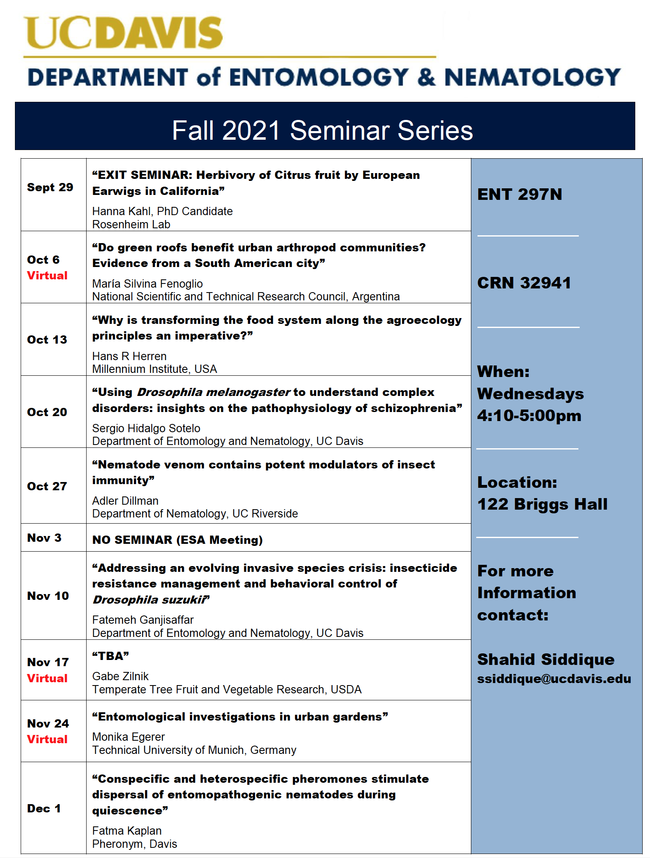
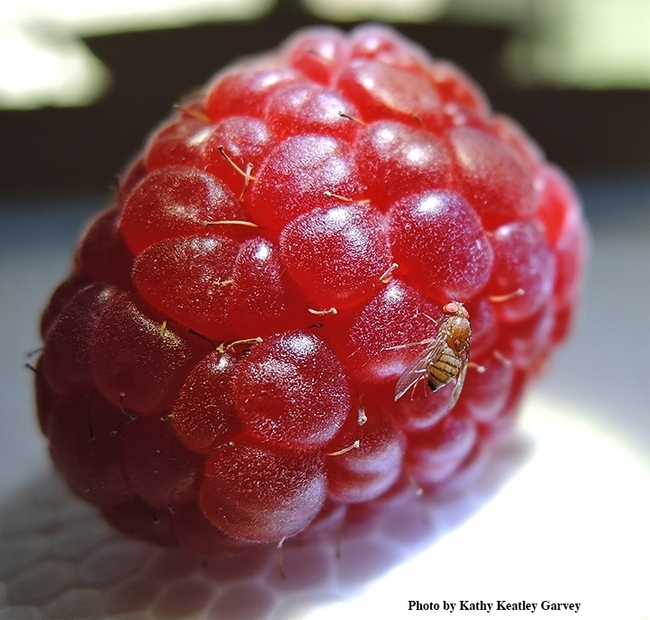
- Author: Kathy Keatley Garvey
When you install bee condos--those wooden blocks with holes drilled in them to attract nesting native bees--sometimes you get the unexpected.
Like earwigs!
Home invasion! Home invasion!
We installed two bee condos, each about the size of a brick, in our yard. One is for leafcutting bees (genus Megachile) and is filled quite nicely, thank you, with 10 tenants. Another, with larger holes, is for blue orchard bees (BOBs, genus Osmia). Despite our "vacancy" sign (discounted rates, free WiFi, free continental breakfasts), nothing is occupying it except earwigs.
Earwigs! We're wigged out.
They were especially persistent in the damp weather.
Native bee guru Robbin Thorp, a native pollinator specialist and emeritus professor of entomology at the University of California, Davis, who has researched native bee holes with colleagues John Barthell and Gordon Frankie, told us: "We found that mostly wasps and earwigs occupied the largest holes. Only a few of the introduced leafcutting bees that could not find appropriate size holes when bee populations were abnormally high would make aberrant nests in the larger cavities. By 1990, we scaled back to the three diameters that our bees use: 4.5, 6.5 and 8 mm (3/16, 1/4, and 5/16 inch) for our studies in California."
The earwigs, Thorp says, "are not so likely to be present now that the weather is hot and dry, but in shady, damp, cool areas, and especially early in the year when it is wet and cool, they can be a problem."
Their research, published in Environmental Entomology in 1998 and titled “Invader Effects in a Community of Cavity Nesting Megachilid Bees (Hymenoptera: Megachilidae)” involved native bee species and their introduced competitors.
Like earwigs.
In their paper, they wrote that the European earwig (Forficttla auricularia L) from Eurasia and northern Africa, was introduced into North America at the turn of the century. "It has invaded most counties in the state of California since its apparent introduction in the late 1910s (Essig 1923, Langston and Powel! 1975)," they wrote. "Its populations have grown to high numbers in natural areas, especially in riparian zones where humidity levels are relatively high (Barthel! and Stone 1995). The earwig is most active during evening hours, climbing into tree crowns to scavenge and hunt but hiding in cracks, crevices, or holes during the daylight hours."
Active indeed. Those European earwigs soon found our condo for BOBs (which perhaps should now mean Big ol' Blast).
